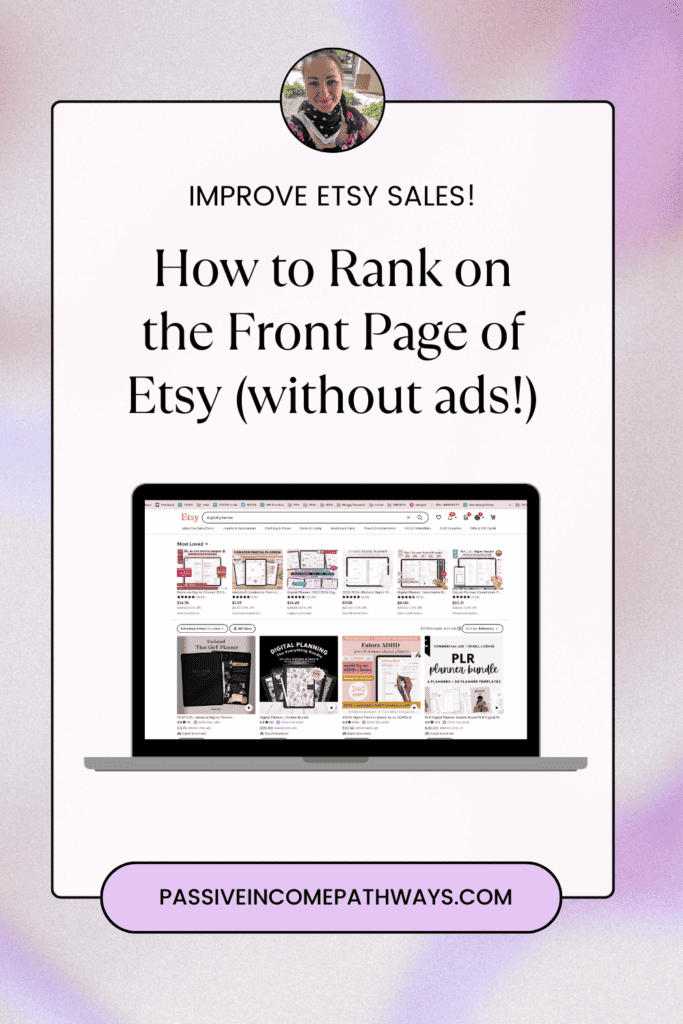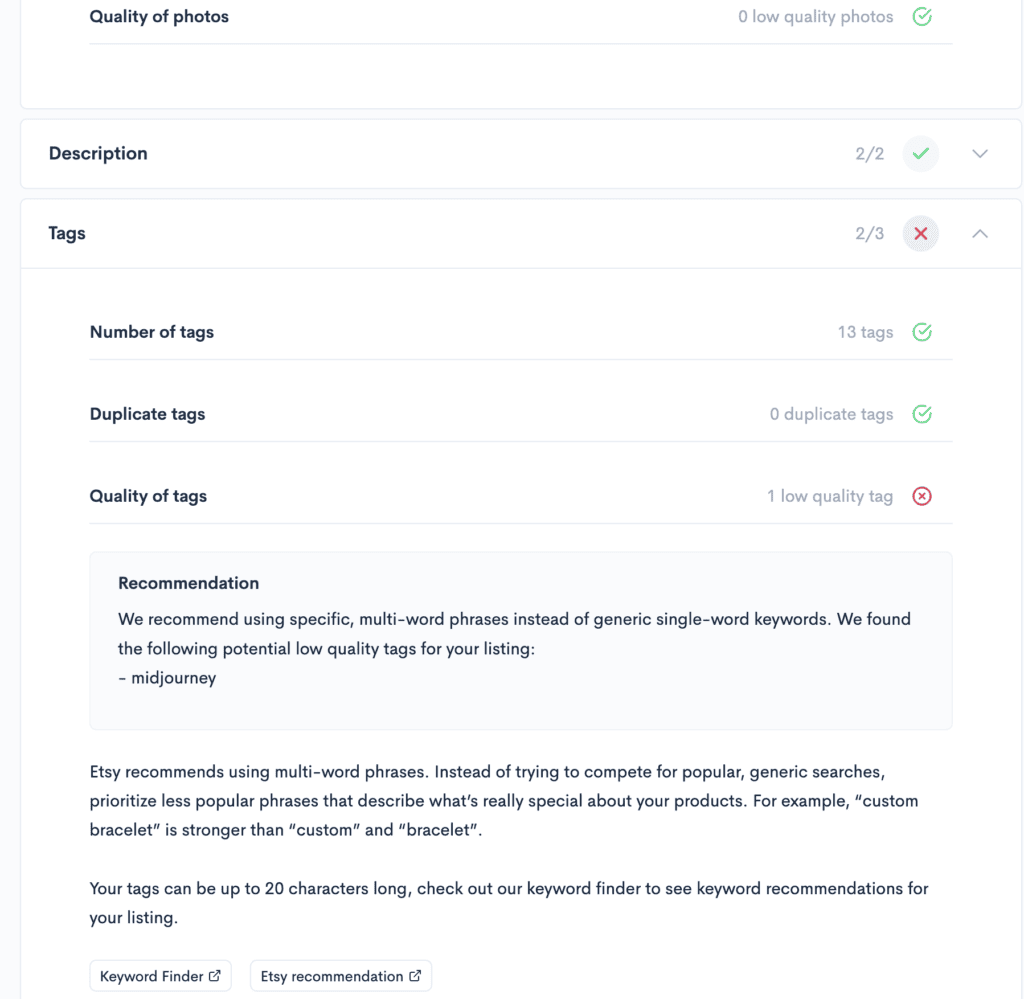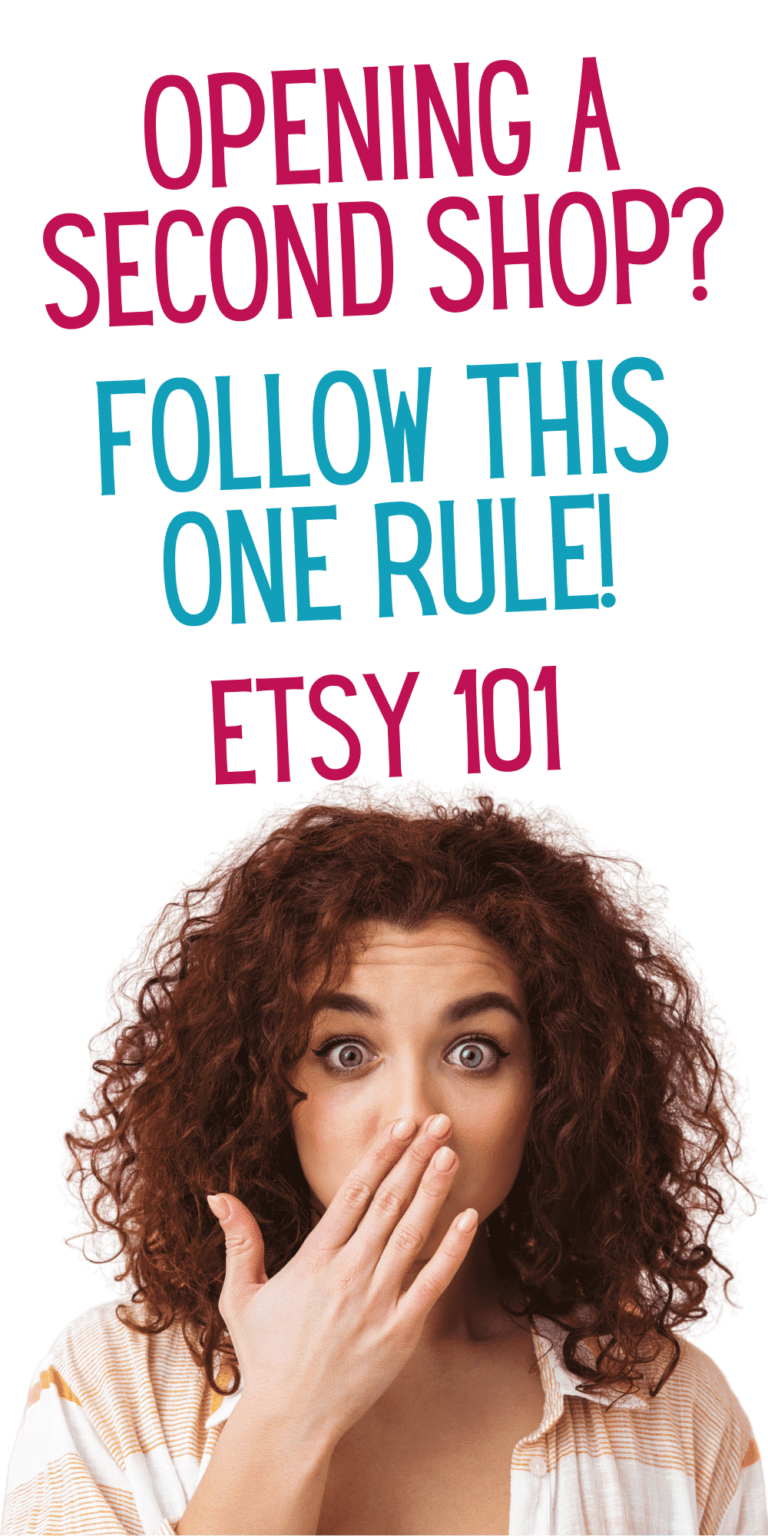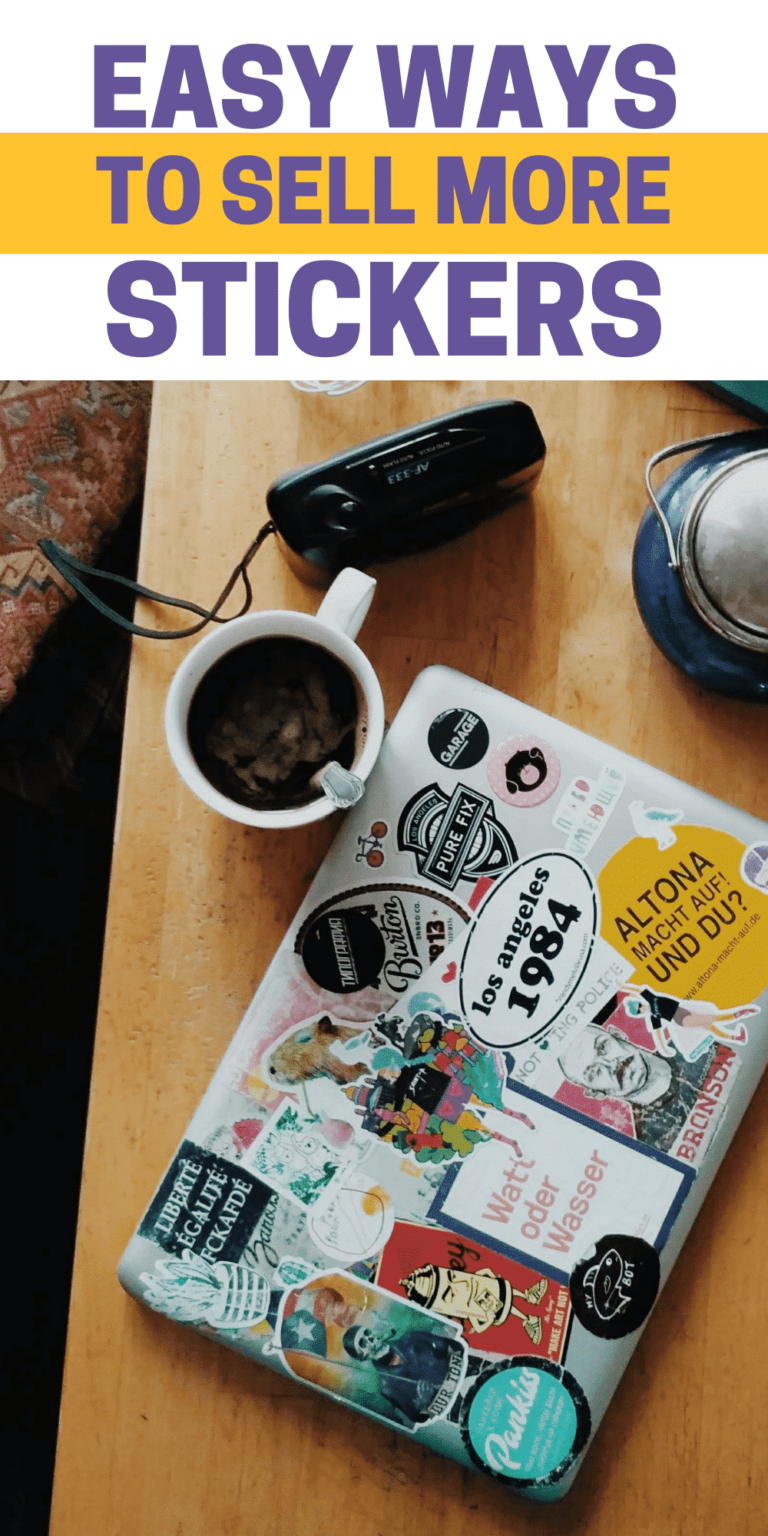How to Rank on the Front Page of Etsy: 10 Easy Etsy SEO Tips for Beginners
You can rank on the front page of Etsy for free, and it isn't as complicated as most people make it!
Keywords are simply search terms that potential customers use to find your products. How do you know which keywords to use in your Etsy listings? How do you rank higher on Etsy? I'll help with that! Keep reading!
How to rank higher on Etsy
No matter what the “gurus” say when giving out Etsy SEO tips, ranking on the front page of Etsy does NOT require paid tools, nor does it even require advanced understanding of Search Engine Optimization (SEO). However, they are helpful and can save you a lot of time.
Transparency: I do not currently promote any paid Etsy SEO tools besides Alura, which also has a free plan. You can use code SADIE30 to save 30% off if you DO go with a paid plan! 🙂 That is my affiliate link.
You've figured out what to sell on Etsy. Now what? Now, it's time to dig into keywords so you can get your Etsy listings on the front page and get even more sales than ever before.
What is Etsy SEO? What are keywords?
Like I said above, keywords are words people use to find your products! 🙂 I use keywords on my blog all the time.
For example, if you search “Etsy SEO” you will find LOTS of blog posts, right? Because of that, I didn't target that keyword. However, “how to rank on the front page of Etsy” is still a popular search but less people write about it. I rank well for this keyword, because I answered the question thoroughly (in this post!).
“Ranking” for keywords just means you're showing up in search when people look for those phrases. If you're ranking on the front page of Etsy, you're going to get MUCH more exposure than if you're on the second, third, or fourth page.
If you find you're consistently missing the front page of Etsy, it's time to update your keywords. You can get your listings to the front page, but it requires a little bit of work.
When to update keywords
If you have a listing that is performing well, leave it alone! Work on listings that aren't performing as well, or performing at all. The easiest fix is going to be taking those listings that are doing “okay” and make them do great. But messing with best-selling listings can give you negative results!
I don't say that to scare you off and make you not want to update your shop… I'm just saying to work on the listings that need a bump up, not the ones that are already doing well.
If you're using Alura, you can log in and use their prompts to update and improve your listings. I did this with my new shop.
Sometimes when I start a new shop, I'm in such a rush to hurry up and get sales that I half ass some of the listings. Do NOT do this 😉 it is much better if you set your listings up right from the beginning.
Alura tells me that I need to make my title a little longer and that I should add more photos. Etsy has changed a lot since I first started over a decade ago; now there are so many more steps (and options!). Utilize all the photo spots if you can! 🙂
I used one “low-quality” tag in the tags as well, so I updated that.
Use main keywords first
Placement matters. Whichever keyword phrase is the BEST, you want to use that one first in your title and also in the first line of your listing description (if possible).
Deciding which keyword is best can take some practice, but if you notice another seller who is selling what you are and they're outperforming your shop, chances are their keywords are on point. You can use their titles as inspiration to create your own.
Warning: do not copy titles word for word! While competitors will be using similar keywords, there's no reason for your titles to be identical. In fact, you want to stand out – not be the same – so using identical titles would defeat the purpose.
Your “main” keyword may be broader, to start. That's okay.
Longtail keywords in Tags and Description
You may hear the phrase “longtail keywords”. This means you're using a keyword phrase instead of just one word. It's another important factor for Etsy SEO.
A keyword may be “mystery box”. A longtail keyword could be “metaphysical mystery box”.
Longtail keywords are more descriptive, but they'll get less searches than broad, shorter keywords.
I include both in my listing descriptions so I'm appealing to a broader audience while grabbing that smaller, “niche” audience above all my competition.
When I was learning about keywords and SEO, I thought about it like this:
If you say you have a “game system” for sale, maybe 100 people would be interested. But they wouldn't know which game system it is, wouldn't know the price range, and wouldn't even know if they want to buy it until after you answer a bunch of questions for them, right?
If you said you have a “vintage Atari game system” for sale, maybe only 30 people would be interested, but those are BUYERS. They've got money in hand, and they're ready to grab it if it's the right price and presented in the right way.
Same thing with “video games” for sale. Personally, I'm a video game snob and though I love to play them, there are probably only about 10 games I'd get excited over and have cash in hand ready to buy. For this reason, I wouldn't click on a listing that said “video games”. I would, however, click on one that said “Tony Hawk video games”.
You're going to sell more products by attracting the right audience with those specific (longtail) phrases (keywords).
Now, video games aren't really sold on Etsy, but this is how I learned SEO so hopefully it will translate for you. 😉
Here is an example:
Alura says I have “1 low quality tag” – that is because it was a one-word tag. Now, it doesn't always mean a one-word tag is low quality, but it's worth keeping an eye on and working towards using as many longtail keywords in your tags as you can.
To replace the low-quality tag, I used Alura's keyword finder and updated it.
Do Plurals Matter? What about Tags in Other Languages?
There are a few things you don't need to worry about when crafting your tags and titles.
Plurals don't matter: Etsy looks at the root word(s) for the phrase the customer typed in and matches them to the root words in your listings.
Don't worry about including misspellings: If a person is searching on Etsy and misspells a word, Etsy will redirect the shopper to the correct results.
Stick with one language: Don't try to translate your tags into multiple languages. Use the language of your shop. Etsy translates for your shoppers.
Don't repeat tags: Don't repeat tags over and over; use 13 unique tags.
Don't repeat categories and attributes: Categories and attributes you add act like tags, so don't repeat it as a tag.
Where should I put my Etsy keywords?
This is probably the #1 question I get asked: do I put my keywords in the title, tags, or description? The answer: YES! Put your keyword phrases in all three places, as organically as possible!
What this means is creating titles and descriptions that make sense.
Example of a best-selling Etsy titles
Here are a few titles I grabbed from items that are currently best-sellers on the front page of Etsy search.
TITLE: Personalized Leather Bookmarks | Free Monogram | Unique Bookmark | Full Grain Leather | Family Gift Ideas | Personalized Leather Bookmark
Why this works: This title works because it uses several keyword phrases that people are searching every day! While there aren't a ton of personalized leather bookmarks on Etsy, this one is a best seller because their SEO is on point, they have great reviews, and they have perfected their photos.
TITLE: Mystery Witchy Box
Why this works: There's not much competition when it comes to my mystery witchy boxes. Because they were IMMEDIATELY a hit, I didn't mess with the title or tags at all after they started selling. If for some reason they stopped selling as well, I'd add in other keywords.
This title works because it's simple, straightforward, and the exact keyword phrase many people search every day to find my item.
Don't overcomplicate it! What will people be searching to find your items? If you couldn't show a photo to your potential customers, how would you describe your item?
Answer your buyer's questions… before they ask them.
When writing blog posts, I try to answer my reader's questions – before they ask them! That is because when are online we don't really get the chance to go back and forth with potential customers. Why? Because attention spans are SHORT!
If someone else is answering your customer's questions and you aren't, guess what? They're no longer your customer… they went somewhere else!
Think about it like this… you walk onto a car lot. You look around and there are several cars you are interested in, but they don't have prices. And there's no salesperson to be found! What are you going to do?
Some people may walk inside the showroom and try to get a salesperson.
Some may start looking up prices online to see if these types of cars are ones they can afford. If they aren't, they walk away. If they are, they may try to find a salesperson.
As for me, if I walk onto a car lot – or into any store – and don't see prices? I'm gone. I'm not hunting someone down to give them my money, and your customers shouldn't have to, either!
Answering their questions ahead of time is an important part of Etsy SEO. Without even realizing it, you'll be SEOing your listings because you're answering questions about the product and delivering value to your potential customers.
To begin answering your potential customers' questions, start by describing your item as if they can't see it. Of course your photos will be amazing (because they are just as important as SEO), but pretend they cannot see them.
It's like one of those silly interview questions when they say, “sell me this pen”.
How can you sell me the product if I can't see it? Start there!
Including attributes of your product can help expand your reach:
- size (US and metric)
- color(s)
- uses
- events/occasions it's good for (birthdays, anniversaries, etc)
- holidays it could be associated with for gifts
- personalization, if offered (“personalized gift” is THE #1 search term on Etsy)
Read more about how to include attributes in your Etsy listings over on Etsy.com.
Examples of questions to answer in your listings:
What are you selling? If someone accidentally discovers your listing somehow, or is sent there by a friend, they may not know exactly what you're selling. Get them interested! Grab their attention with the VERY first line of your description.
What is it for? How can your customer use this item? Is it a greeting card that can also be used as a parachute? Okay, that's a bit ridiculous, but think about the different ways your customer can use the item!
What size is it? What color is it? This comes back to attributes (above). Describe your product so someone who can't see it can picture it.
How do I take care of it? I make care cards for sellers who make mugs, vinyl decals, etc. Including care instructions in your listing, as well as sending the customer a care card when they buy is helpful. Here's a tutorial on how to make your own care cards.
Pro tip: Keep it simple. Don't use fancy jargon. If you do, you are going to miss out on a lot of sales. Don't assume your potential customer knows anything about the product or how to use it.
Evoke emotion: This isn't a question to answer so much as a reason to get someone to buy your product. Why should they buy it? How can it help them?
With my mystery witchy boxes, I make sure to include in my listing that I intuitively choose each item for the individual customer I'm serving at the time. I say:
I'll come up with something amazing that your witchy heart will love! 💕
This shows my customers I care about them and ensures they're connected to me on an emotional level before they hit that buy button.
Bad SEO advice
I've seen tons of bad SEO advice given in Etsy groups. Please, please, do not take advice from random Etsy sellers without doing your own due diligence first! If you use this bad advice, your shop tanks and then you've gotta work twice as hard to dig out of that hole!
10 Simple Etsy SEO Solutions
Improving your Etsy SEO is essential to increase the visibility of your products and attract more potential buyers to your shop. The key is to strike a balance between SEO optimization and genuine, engaging content.
Start your listing description with a compelling lead-in that naturally incorporates your top keywords. This grabs attention and boosts SEO without sounding robotic. Follow that up with concise yet informative sentences that clearly outline the unique features and benefits of your product. This approach not only caters to search algorithms but also provides real value to your potential customers. That's what it's all about!
TL;DR? Here are 10 more tips to enhance your Etsy SEO:
- Optimize Shop Name: Your shop name should reflect what you sell. This helps search engines and customers understand your niche. While you can change your Etsy shop name, it's best to pick something you can stick with. Make it easy to say, spell, and remember!
- Product Titles: Create concise yet descriptive product names that include relevant keywords. This improves your chances of appearing in search results. The Seller Handbook has more info about what they're looking for in titles, too.
- Product Descriptions: Carefully choose keywords for your product descriptions. Avoid overusing the same keywords and write detailed, informative descriptions.
- Avoid Keyword Repetition: Repeating keywords excessively can hurt your SEO. Instead, focus on using a variety of relevant keywords.
- Tags: Utilize all 13 available tags for each listing. Choose tags that are specific to your product and potential buyer searches. Use Alura to figure out which tags you should use for the best results.
- Images: High-quality images are crucial for attracting customers and ranking in Google search results. Show various angles and variations of your product.
- Shop Sections: Organize your shop into relevant sections. This makes it easier for customers to navigate and improves SEO.
- Seller Handbook: Leverage Etsy's resources, like the Seller Handbook, to gain insights into best SEO practices.
- Customer Reviews: Positive reviews can boost your shop's credibility and visibility. Encourage satisfied customers to leave reviews.
- Engage: Stay active in your shop, update listings regularly, and interact with customers. Active shops tend to have better SEO. When you post a new listing, it gives your shop a little “boost” – if you do this once a day, your listings will be more likely to get to (and stay at) the front page.
If you've read this far, you've got what it takes to tackle Etsy SEO head on, I'm SURE of it! This post is about 2,000 words long. The dedication it takes to get through a post that length is pretty crazy, right? So, let's throw that same energy into tackling Etsy SEO and ranking your shop on the front page!
Read my other posts about Etsy and SEO
- 31 Ways to Increase Etsy Sales
- Avoid Getting Shut Down on Etsy
- How to Hide Sold Items on Etsy
- What to do if Etsy Suspends Your Account
- Best Digital Products to Sell on Etsy
- How to Get Repeat Customers on Etsy
- How to Sell Printables on Etsy for Passive Income
- How to Sell Stickers on Etsy
- How to Make Planners to Sell on Etsy
If this post helped you in any way, please pin one of these images below!
It helps my blog tremendously. Thank you!















This article helped me out with SEO in Etsy. I do have one question for you. I bought some of your keyword cheat sheets but for some of the items I want to make I didn’t see a cheat sheet for. I have a keyword tool call KeySearch could I use that tool and find Etsy keywords? Is it the same as finding them for a blog? Do I pick the longtail keywords that have a high search volume and low competition? I have been making some challenges and looked up on Etsy that those words are in green does that mean I could rank for them?
I use alura! If you use code SADIE30 you get 30% off. http://sadiesmiley.com/alura